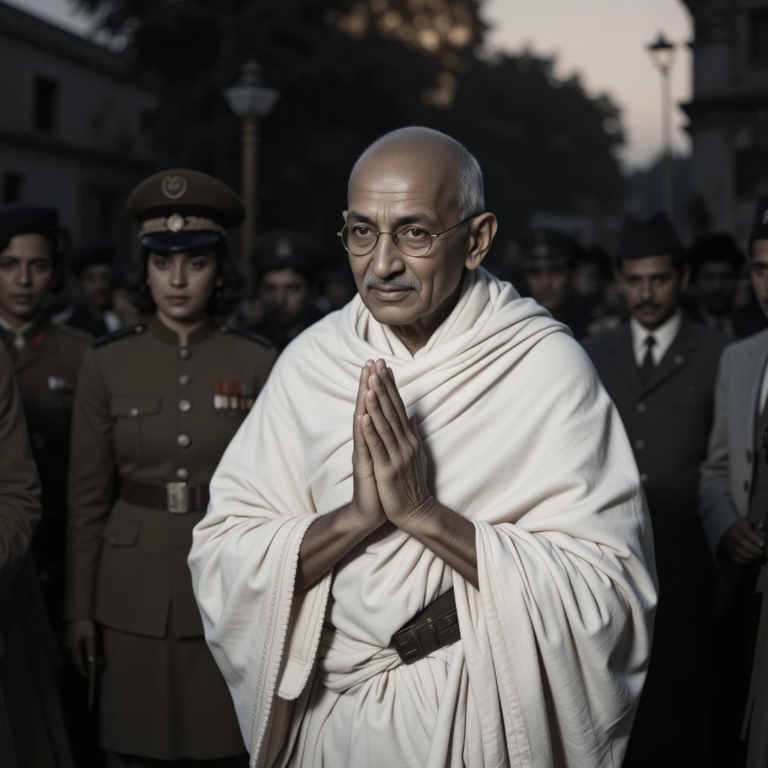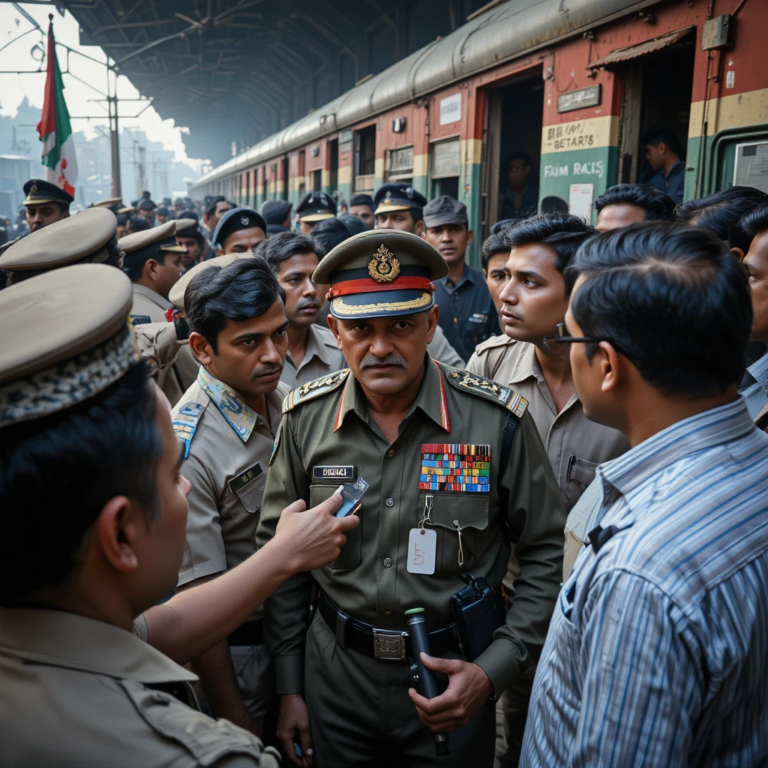Introduction
Operation Parakram, translating to “Valor” in Sanskrit, stands as India’s most extensive military mobilization since the 1971 Indo-Pakistani War, deploying nearly 800,000 troops along the India-Pakistan border from December 2001 to October 2002. Initiated in response to the audacious terrorist attack on the Indian Parliament on December 13, 2001, attributed to Pakistan-based militant groups Lashkar-e-Taiba (LeT) and Jaish-e-Mohammed (JeM), the operation was a calculated exercise in coercive diplomacy. India sought to compel Pakistan to dismantle terrorist networks, assert its military resolve, and capitalize on global anti-terrorism sentiment following the September 11, 2001, attacks in the United States.

Table of Contents
Historical Context
The India-Pakistan Fault Line
Since their partition in 1947, India and Pakistan have been embroiled in a rivalry defined by four wars (1947–48, 1965, 1971, and 1999) and persistent tensions over Kashmir, a region both claim in full. The 1998 nuclear tests by both nations transformed their conflict, introducing the risk of catastrophic escalation. The 1999 Kargil War, where Pakistan infiltrated troops across the Line of Control (LoC) in Kashmir, tested India’s restraint. India’s decision to avoid crossing the LoC prevented a broader conflict but left unresolved Pakistan’s use of proxy warfare through militant groups.

By 2001, Pakistan-backed terrorism in Jammu and Kashmir had intensified. Groups like LeT and JeM, allegedly supported by Pakistan’s Inter-Services Intelligence (ISI), conducted high-profile attacks, including the October 1, 2001, assault on the Jammu and Kashmir Legislative Assembly, which killed 29 people. These incidents fueled India’s frustration, as diplomatic efforts, such as the 2001 Agra Summit between Prime Minister Atal Bihari Vajpayee and President Pervez Musharraf, collapsed without progress.
Post-9/11 Global Dynamics
The September 11, 2001, attacks reshaped global security priorities, with the U.S. launching the “War on Terror” against al-Qaeda and the Taliban in Afghanistan. Pakistan, a frontline ally due to its geographic proximity and influence over Afghan factions, faced pressure to curb terrorism. President Musharraf, who had seized power in a 1999 coup, pledged cooperation with the U.S. but maintained ties with anti-India groups, viewing them as strategic assets in Kashmir. This dual policy created a delicate balancing act for Pakistan, which India sought to exploit by highlighting Pakistan’s role in cross-border terrorism.
The global condemnation of terrorism post-9/11 provided India an opportunity to frame its concerns about Pakistan-sponsored militancy within a broader narrative, setting the stage for a decisive response to the Parliament attack.
The Trigger: The Parliament Attack
On December 13, 2001, five armed militants breached the security of the Indian Parliament in New Delhi, driving a white Ambassador car into the complex. Equipped with AK-47 rifles, grenades, and explosives, they launched a 30-minute assault, targeting parliamentarians and security personnel. The attack killed six policemen, a gardener, and all five attackers. While no parliamentarians were harmed, the assault on India’s democratic core sent shockwaves across the nation.

The Vajpayee government swiftly attributed the attack to LeT and JeM, alleging Pakistani complicity. Home Minister L.K. Advani condemned the incident as an attack on India’s sovereignty, citing intelligence linking the militants to Pakistan. Public outrage and political pressure demanded a robust response, prompting the government to initiate Operation Parakram.
Operation Parakram: Objectives and Deployment
Strategic Goals
Operation Parakram was a multifaceted strategy combining military mobilization with diplomatic pressure. Its key objectives were:
- Dismantle Terrorist Networks: India demanded that Pakistan shut down LeT, JeM, and other militant groups, arrest their leaders, and extradite 20 terrorists, including those linked to the 1999 Indian Airlines hijacking.
- Demonstrate Military Strength: The mobilization aimed to signal India’s readiness to escalate, including potential strikes on terrorist camps in Pakistan-administered Kashmir.
- Leverage International Support: India sought to isolate Pakistan diplomatically, using the post-9/11 anti-terrorism climate to pressure the U.S. and others to compel Pakistani compliance.
- Secure Tactical Advantages: The operation included plans to strengthen India’s positions along the LoC, enhancing its defensive posture in Kashmir.

Military Mobilization
On December 15, 2001, the Cabinet Committee on Security (CCS), in consultation with Army Chief General S. Padmanabhan, Navy Chief Admiral Sushil Kumar, and Air Chief Marshal Anil Yashwant Tipnis, authorized a massive mobilization. Operation Parakram commenced on December 18, 2001, with the following components:
- Army: Approximately 500,000 troops, including three strike corps (1, 2, and 21 Corps), were deployed along the International Border (IB) and LoC, primarily in Rajasthan, Punjab, and Jammu and Kashmir. The deployment included armored divisions, artillery, and logistical units.
- Navy: The Indian Navy positioned warships in the Arabian Sea, targeting Karachi, Pakistan’s economic hub, with plans for a potential blockade or amphibious operations.
- Air Force: The Indian Air Force deployed fighter jets, including Mirage 2000s and MiG-29s, to forward airbases, preparing for airstrikes on terrorist infrastructure.
The mobilization, involving extensive rail and road movements, was the largest since 1971. The plan envisioned a limited offensive, starting with airstrikes in January 2002, followed by special forces operations to neutralize terrorist camps.
Logistical Hurdles
The mobilization exposed significant operational challenges. India’s strike corps, stationed far from the border, took three weeks to deploy, allowing Pakistan to counter-mobilize 300,000 troops and fortify its defenses. This delay eroded India’s strategic advantage, highlighting deficiencies in rail infrastructure, inter-service coordination, and rapid response capabilities. These shortcomings later inspired the Cold Start doctrine, aimed at enabling swift, limited offensives within 72–96 hours.
Execution and Escalation
January 2002: A Tense Standoff
By January 2002, both nations had deployed nearly 800,000 troops, with ballistic missiles positioned near the border. Sporadic artillery exchanges in Kashmir heightened fears of escalation. On January 12, 2002, President Musharraf delivered a televised address, condemning the Parliament attack and pledging to combat extremism. He banned five militant groups, including LeT and JeM, and promised to regulate madrasas.
India, skeptical of Pakistan’s intentions given its history of unfulfilled promises, maintained its deployment. Prime Minister Vajpayee postponed a planned strike on January 14, opting to monitor Pakistan’s actions. The standoff underscored the nuclear risks, with Pakistan hinting at its willingness to use nuclear weapons, while India adhered to its no-first-use policy.
May 2002: The Kaluchak Crisis
Tensions flared again on May 14, 2002, when terrorists attacked an army camp in Kaluchak, Jammu, killing 34 people, including soldiers and their families. Attributed to Pakistan-based militants, the attack reignited calls for military action. On May 18, Vajpayee reviewed India’s preparedness with Defense Minister George Fernandes and military chiefs, and the CCS considered a limited offensive. However, Pakistan’s fortified defenses and international pressure, particularly from the U.S., deterred escalation.
The U.S., concerned about a nuclear conflict disrupting its Afghan operations, intensified diplomatic efforts. Secretary of State Colin Powell and President George W. Bush urged restraint, while travel advisories and evacuations of non-essential personnel highlighted the crisis’s gravity.
Tactical Victory: Capture of Point 5070
In a covert operation, India’s Jat Regiment captured Point 5070, a strategic peak on the Pakistani side of the LoC near Dras, renaming it “Balwan.” The peak provided oversight of the Gultari Valley, disrupting Pakistani supply lines. The operation, executed discreetly, was a tactical success, leading to the dismissal of Pakistan’s Brigade Commander and General Officer Commanding of the Northern Areas.
De-escalation and Costs
By mid-2002, the prolonged standoff had become untenable. Operation Parakram cost India approximately Rs. 3 crore per day, totaling over Rs. 2,100 crore (about $3 billion) over 10 months. The financial burden, coupled with domestic pressures and international calls for de-escalation, prompted the CCS to announce the “strategic relocation” of troops on October 16, 2002, effectively ending the operation.
The human cost was significant, with India suffering 798 fatalities, primarily from mine-laying accidents, ammunition mishandling, vehicle accidents, and counter-insurgency operations in Kashmir. Some estimates suggest up to 1,874 casualties, surpassing the 527 deaths in the 1999 Kargil War. These losses, incurred without direct combat, underscored the operation’s toll on soldiers and their families.
Socio-Economic Impacts
Border Communities
The mobilization disrupted life in border states like Rajasthan, Punjab, and Jammu and Kashmir. Farmers were unable to access fields near the border due to mine-laying and troop movements, while curfews and evacuations displaced thousands. The economic impact on these communities was severe, with lost livelihoods and heightened insecurity.
Economic Strain
The operation strained India’s economy, already recovering from post-1998 sanctions. The BJP government raised taxes by 4% to finance the deployment, drawing criticism from businesses and the middle class. The wear on military equipment, including tanks and artillery, required significant post-operation repairs, further burdening the defense budget.
Military Morale
The prolonged deployment, without clear objectives or combat, tested military morale. Soldiers endured harsh conditions along the border, with limited engagement, leading to frustration. The high casualty rate from accidents, such as mine-laying mishaps, compounded these challenges, highlighting the need for better training and safety protocols.
Outcomes and Evaluation
Operation Parakram’s outcomes are a mix of limited successes and significant shortcomings:
Successes
- Diplomatic Pressure: Musharraf’s January 2002 speech and the ban on LeT and JeM were concessions to Indian and international pressure, though Pakistan’s implementation was inconsistent.
- Tactical Gains: The capture of Point 5070 strengthened India’s position on the LoC, demonstrating its covert operational capability.
- Global Alignment: The operation aligned India’s concerns with the global anti-terrorism narrative, drawing attention to Pakistan’s role in militancy.
Failures
- Unmet Goals: Pakistan did not dismantle LeT or JeM, and cross-border infiltration resumed by spring 2002. The 20 terrorists demanded by India were not extradited.
- High Costs: The Rs. 2,100 crore expenditure and 798–1,874 casualties strained resources, with equipment wear impacting readiness.
- Strategic Missteps: The slow mobilization allowed Pakistan to counter-deploy, neutralizing India’s advantage and exposing logistical gaps.
- Nuclear Constraints: Pakistan’s nuclear threats limited India’s options, highlighting the challenges of escalation in a nuclearized environment.
Criticisms and Reforms
Strategic Flaws
Operation Parakram has been criticized for its lack of clarity and execution. Former Navy Chief Admiral Sushil Kumar described it as a “strategic misadventure,” arguing it lacked a defined aim. General S. Padmanabhan emphasized the need for clear political directives to avoid prolonged standoffs. The slow mobilization prompted the Cold Start doctrine, which proposed rapid, limited offensives to neutralize terrorist infrastructure without triggering nuclear retaliation.
Political Hesitation
The Vajpayee government’s reluctance to authorize military action drew scrutiny. Former Foreign Minister Jaswant Singh framed the operation as coercive diplomacy, but Vajpayee later expressed regret for not escalating, suggesting a missed opportunity to address Pakistan’s proxy war. The lack of decisive leadership left the military in a state of prolonged readiness, impacting morale and resources.
International Mediation
The U.S. played a critical role in de-escalation, with diplomatic interventions by Powell and Bush preventing a broader conflict. This underscored India’s reliance on external actors to manage crises with Pakistan, a dynamic that persisted in later incidents like the 2008 Mumbai attacks.
Lessons and Reforms
Operation Parakram catalyzed significant reforms:
- Rapid Mobilization: The Cold Start doctrine addressed logistical delays, emphasizing pre-positioned forces for swift operations.
- Clear Objectives: Future operations require well-defined political and military goals to avoid prolonged standoffs.
- Jointness: The operation highlighted the need for better inter-service coordination, leading to the creation of the Integrated Defence Staff in 2001 and the Chief of Defence Staff in 2020.
- Economic Preparedness: Sustained operations require fiscal planning to minimize domestic impact.
- Nuclear Strategy: The nuclear overhang necessitated limited, precise operations, shaping India’s approach to surgical strikes in 2016 and 2019.
Legacy and Implications
Operation Parakram reshaped India’s approach to national security. The Cold Start doctrine, though not officially acknowledged, influenced India’s response to later provocations, such as the 2016 Uri surgical strikes and 2019 Balakot airstrikes, which prioritized swift, targeted actions. The operation also underscored the importance of international diplomacy, with India leveraging global pressure to isolate Pakistan, as seen in post-2008 Mumbai attack sanctions against LeT and JeM leaders.
The operation reinforced the nuclear stalemate between India and Pakistan, with the capture of Point 5070 demonstrating India’s ability to alter the LoC’s status quo. However, Pakistan’s continued support for terrorism highlighted the limitations of coercive diplomacy without decisive action. The socio-economic costs, particularly for border communities, underscored the need for better civil-military coordination in future operations.
As of June 30, 2025, Operation Parakram remains a case study in the complexities of managing India-Pakistan tensions in a nuclearized environment. Its lessons continue to inform India’s defense reforms, diplomatic strategies, and approach to counter-terrorism, emphasizing the balance between resolve and restraint.
Conclusion
Operation Parakram was a bold but imperfect response to Pakistan-sponsored terrorism, triggered by the 2001 Parliament attack. While it achieved tactical successes and diplomatic concessions, its high costs, slow mobilization, and unmet objectives exposed strategic and political shortcomings. The operation’s legacy lies in its role as a catalyst for military reforms, notably the Cold Start doctrine, and its reinforcement of India’s reliance on international diplomacy to manage crises with Pakistan. As India navigates its rivalry with Pakistan, the lessons of Operation Parakram—clear objectives, rapid response, and economic preparedness—remain critical to its national security strategy.
References
- Kalyanaraman, S. (2002). “Operation Parakram: An Indian exercise in coercive diplomacy.” Strategic Analysis, 26(4), 478–492.
- Wikipedia. (2025). “2001–2002 India–Pakistan standoff.” Retrieved from https://en.wikipedia.org/wiki/2001%E2%80%932002_India%E2%80%93Pakistan_standoff
- The Print. (2019). “Operation Parakram: The war that wasn’t but could have reined in Pakistan.” Retrieved from https://theprint.in/opinion/operation-parakram-the-war-that-wasnt-but-could-have-reined-in-pakistan/175964/
- The Week. (2021). “What did India’s military mobilisation after Parliament attack achieve?” Retrieved from https://www.theweek.in/news/india/2021/12/13/what-did-india-military-mobilisation-after-parliament-attack-achieve.html
- Times of India. (2003). “India suffered 1,874 casualties without fighting a war.” Retrieved from https://timesofindia.indiatimes.com/india/india-suffered-1874-casualties-without-fighting-a-war/articleshow/463614.cms
- Hindustan Times. (2025). “Guest Column: Diaries from ‘Operation Parakram’.” Retrieved from https://www.hindustantimes.com/columns/guest-column-diaries-from-operation-parakram-101715735138950.html
- Indian Defence Review. (2013). “Lost opportunities in Operation Parakram.” Retrieved from http://www.indiandefencereview.com/news/lost-opportunities-in-operation-parakram/
- Bharat Rakshak. (2006). “About Valour and Glory: ‘Operation Parakram’ – Indian Army.” Retrieved from https://www.bharat-rakshak.com/IA/History/2001-Parakram.html
- Swarajya. (2024). “Former Chief General S Padmanabhan, Who Led The Indian Army In The Crucial ‘Operation Parakram’ Against Pakistan, Passes Away.” Retrieved from https://swarajyamag.com/news-brief/former-chief-general-s-padmanabhan-who-led-the-indian-army-in-the-crucial-operation-parakram-against-pakistan-passes-away
- Economic Times. (2001). “From Parakram to water diplomacy: India’s retaliation to Pakistan’s actions since 2000.” Retrieved from https://economictimes.indiatimes.com/news/defence/from-parakram-to-water-diplomacy-indias-retaliation-to-pakistans-actions-since-2000/operation-parakram-a-strategic-standoff-2001-2002/articleshow/107856404.cms




